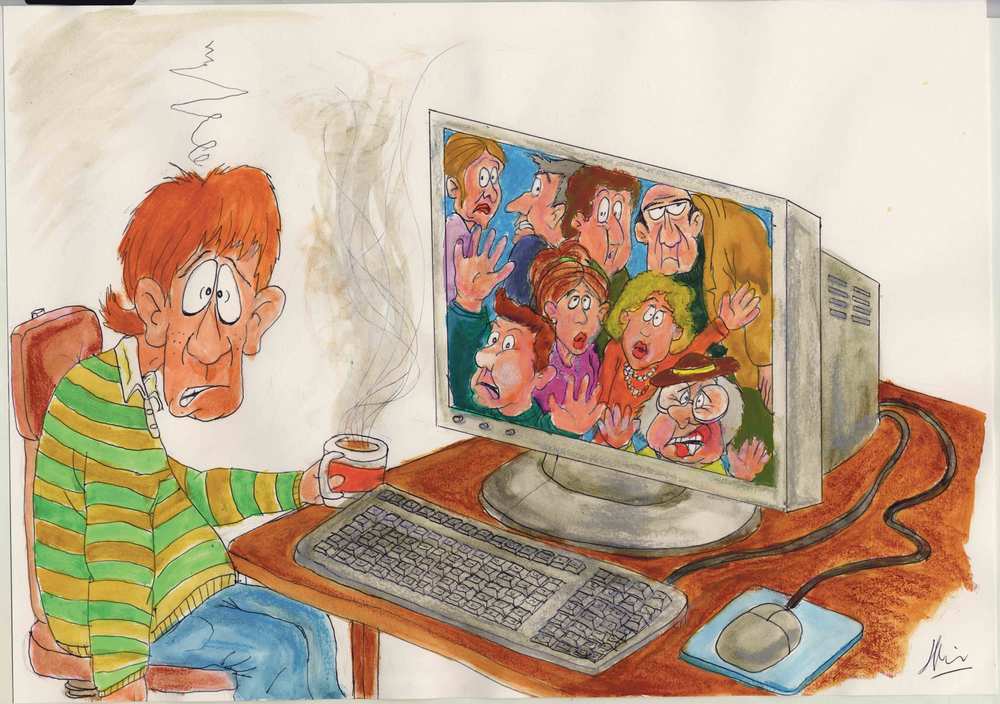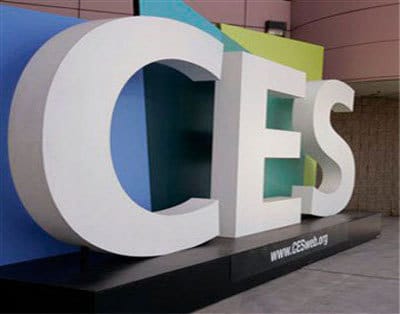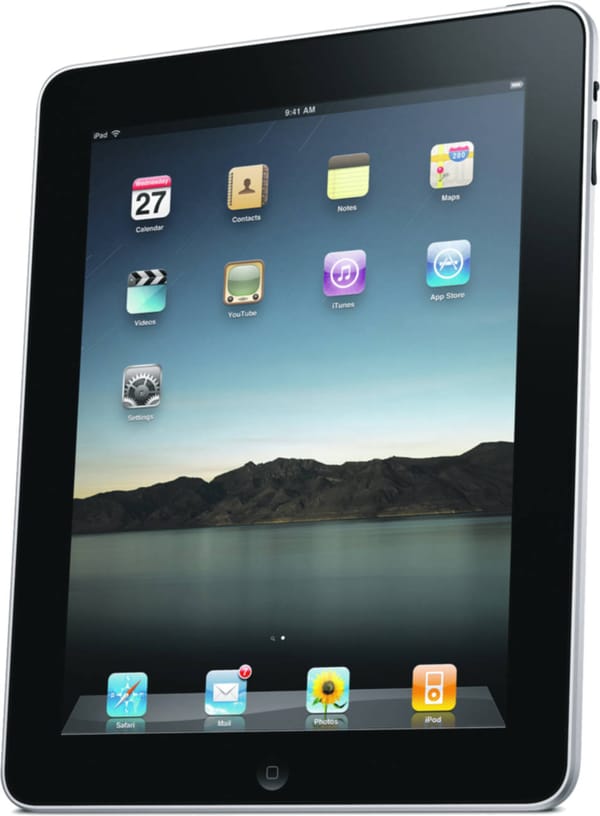An Anti-Social Path?
Elizabeth Crouch takes a look at the new social network that argues fewer friends leads to more meaningful relationships

In November last year the latest in a seemingly never-ending string of social networks launched. ‘Path’ was hyped as a new way to socialise online and claimed to be founded on scientific principles. Its creators call it ‘a personal network’ where users can augment existing relationships instead of replacing them. Uniquely, on this social network you are limited to 50 friends. So what are these scientific principles, and what questions does this new network raise about our ability to manage our online relationships?
The hope is that, since users are restricted to sharing pictures and videos with 50 friends, they will be encouraged to share more personal moments with their nearest and dearest, instead of broadcasting their lives indiscriminately.
Why 50? Path’s creators claim to be inspired by the anthropologist Professor Robin Dunbar. In 1992, Dunbar used data from primates to generate a number, popularly known as Dunbar’s number, which predicts the stable social group size to which humans are cognitively limited. This lies between 100 and 230, but the commonly cited figure is 150. He extrapolated this number from data showing a strong relationship between the number of primates in a social group and the volume of a brain area called the neocortex.
Dunbar found that personal relationships in these groups expanded approximately by a factor of 3. “Your personal real world social network actually consists of a series of circles or layers that typically number 5, 15, 50, 150, 500, 1500 (with each layer inclusive of the ones inside it),” Dunbar explains. Path’s creators limit your online friends to 50, saying that these are the people who “we consider to be the most important and valued people in our lives.”
Social groups are traditionally maintained primarily through close physical contact, but online social networks can simulate physical proximity with friends all over the world. Does the virtual world therefore function differently to the physical one? Is Dunbar’s number relevant online? Some people believe that in the age of extreme social connectivity, Dunbar’s number is increasingly irrelevant due to the fact that we can maintain some form of relationship with huge numbers of people. In an influential blog post, Chris Brogan, businessman and journalist, outlines how to ‘beat’ Dunbar’s number and maintain huge social networks through extreme organisation.
However, Dunbar argues that, in reality, this is not possible. “Network size in the virtual world seems to mirror network size in the real world, both according to our data and that of others. Facebook did a complete analysis of the [average] number of friends [people had] in their entire database in February 2010, and the average was 120-130.”
“There is a question as to what limits network size in the real world -- time, memory or (emotional) cognition,” Dunbar explains, “If it is time or memory (i.e. keeping track of what people have done), then digital media should solve that and allow us to increase network size. There seems to be no evidence that the electronic world actually does allow us to increase network size, suggesting that the constraint is something to do with the kind of interaction or emotional cognition.”
What is this emotional restraint, and why is it related to the size of your brain? “I wish we knew!” says Dunbar “It is clearly something to do with the capacity to process relationships. In part, this is a time problem, because you have to invest time in a relationship to make it work at a certain level of quality.”
“But there is a cognitive constraint too. We have recently shown that the size of your social network correlates both your competences on metalizing skills (the ability to understand what others are thinking) and the size of core areas of the brain involved in metalizing competences. So this looks like a processing capacity constraint.”
Although we do not fully understand why, it seems that the fundamental wiring of our brains prohibits us from increasing our social network size. Why do we have so many online friends if we cannot cognitively facilitate everyone? “150 isn’t the limit on the number of people you can know, just on the number you can have a personalised relationship with,” Dunbar explains. “The [other people you know] are people you recognise, but the quality of relationships is different and impersonal. 1500 is around the limit of the number of faces you can put names to. You can always add more friends to your Facebook page, but this doesn’t make all of them friends in the true sense. They are more like voyeurs onto your social world.”
Another of Path’s aims is that, by limiting users to 50 friends, members will post more personal moments of their lives. This concept was inspired by the work of Nobel-winning behavioural economist Daniel Kahneman. He studied the nature of memories and experiences relating to happiness, quantitatively demonstrating that our perception of happiness is often skewed by what we last experienced rather than the entire experience. The creators of Path are reported to have heard Kahneman speak early in 2010, and decided to make their network one where more personal memories could be shared.
Does this mean the online relationship on Path is better quality? As Path is so new, this remains to be seen. However, it is worth examining whether online relationships are of equal value to those in the physical world. This is relatively unknown territory, but more research in this area is taking off. Aleks Krotoski, a technology journalist and academic, has extensively researched the social psychology of online relationships. She believes that if you want to understand whether friendships are different online compared to offline than you need to get to “the nitty gritty of what defines friendship, you have to look at the psychological features of closeness.” One area she examines is trust.
In her PhD thesis, Krotoski studied people who used Second Life, and questioned them thoroughly on the issue of trust. She found a whole spectrum of different degrees of closeness between people who didn’t know each other offline, and “that this closeness developed in the same way as offline friendships and relationships develop: through sharing, through disclosure, through reciprocation of personal information and through perceptions of similarity.” In order words, people found new methods to develop values essential for friendship and have close relationships.
But this doesn’t answer whether online relationships are equivalent to those in the physical world. Robin Dunbar has recently completed studies looking at how different modes of online social interaction affect relationship quality.
“None of the digital modes yields the same relationship satisfaction as face-to-face interaction, with the possible exception of Skype,” Dunbar explained. “What seems to be critical, however, is the amount of laughter you do in the process. [However], trust is crucial to all relationships, online or face-to-face, and is built up through interacting frequently and by the signals we give off.”
The amount of time we spend online, and the relationships we establish, is a controversial topic. Currently, it appears that our brains are not physically capable of supporting larger friendship circles and our social structure appears to be the same online and offline. However, the scientific evidence that supports this also shows that we already only keep in touch with a core group of friends online and, if users are proactive, then they can select who sees their information. It is possible that Path is simply a more convenient way to share moments with those who actually mean something to you.
The important question that remains unanswered is whether the same value can be attributed to online friendships as those in the physical world. Here, Path will be judged along with all social networking sites; none of the scientific principles on which it is based will alter that!








